#Indian Navy success
Explore tagged Tumblr posts
Text
Indian Navy Civilian INCET 01/2024 Notification #latestjobnews #latesjobnotification#trending#viral
For More Details: https://manasadefenceacademy.com/indi... https://manasadefenceacademy1.blogspo...
Ultimate Guide to Indian Navy Civilian Chargemen 2024 Recruitment! If you aim to join the Indian Navy as a Civilian Chargeman in 2024, you've come to the right place. Manasa Defence Academy provides the best training to prepare you for various posts including Chargemen, Firemen, Tradesmen, and other civilian roles. Our academy offers top-quality facilities such as physical training by retired Army officers, swimming, gym, yoga, written exam preparation, SSB interviews, English speaking skills, stage speech training, and excellent hostel and mess services. Alongside professional training, cadets can also complete their higher studies after 10th grade. Join us and get ready to serve the nation with pride and excellence.
Call: 7799799221
Website: www.manasadefenceacademy.com
#IndianNavyRecruitment#CivilianChargemen2024#ManasaDefenceAcademy#NavyTraining#DefenceJobs2024#trending#viral#manasadefenceacademy#vizag#visakhapatnam #JoinIndianNavy#ChargemenRecruitment#NavyCareers#MilitaryTraining#SSBPreparation#trending#viral#recruitment2024 #latestjobnews #latestjobnotification2024 #indiannavy
#Indian Navy training#Manasa Defence Academy#Navy recruitment 2024#best defence training#Indian Navy success#NDA preparation#SSB interview tips#military training 2024#defence academy in Visakhapatnam#Indian Navy jobs#top Indian Navy training#physical training for Navy#Indian Navy written exam#Navy SSB interview#English speaking for Navy#stage speech training#hostel facilities for Navy training#swimming training for Navy#gym for defence training#yoga for military#higher studies after 10th#Coast Guard training#SSC jobs preparation#central government jobs#Army training#Airforce training#Navy cadet training#defence jobs in India#recruitment tips 2024#Manasa Defence Academy reviews
0 notes
Text
SUMMARY Tuesday Israel Realtime
🔻no overnight rockets / drones
▪️HOSTAGE CEASEFIRE LEAKS.. “the head of the Mossad continued the meetings in Qatar during the night and plans to return to Israel today. The negotiations have officially started and “there is a solid basis for starting talks”. High level of Mossad, Shin Bet and IDF work teams are deployed in Qatar.”
All reported demands are OUTRAGEOUS, EXTREME, war loss type of demands.
▪️BIDEN SAYS.. on his Twitter account: "Today I spoke again with Prime Minister Netanyahu regarding the latest developments in Israel and Gaza. I continued to confirm that Israel has the right to persecute Hamas, the terrorist group responsible for the worst massacre of the Jewish people since the Holocaust.
I reiterated the need for an immediate ceasefire as part of a deal to release the hostages, which will last several weeks, so that we can return them home and help the citizens in Gaza. I asked the Prime Minister to send a team to Washington to discuss ways to fight Hamas without a major ground operation in Rafah"
🔸GAZA.. the new battle for al-Shifa hospital, which was re-taken by Hamas as a command and control site, shows the IDF has a humanitarian problem - Hamas is consistently hiding in maximum civilian casualty sites, and a control problem, it appears they are taking and smashing but not occupying.
While the Prime Minister announced Israel WILL go into Rafah, we also hear “a few weeks of preparation” while at the same time the U.S. is demanding approval rights on the approach, to make sure Hamas’s human shields are kept safe while Israeli hostages continue to rot.
The US, via various unspoken and now spoken threats, is effectively stopping Israel in Gaza.
🔸LEBANON.. tit-for-tat attacks continue. The Lebanese now report 90,000 evacuated civilians, and around 400 dead, with about 4 of 5 being Hezbollah fighters - an incredible targeting success although perhaps too discriminate?
Hezbollah continues a gradual use of bigger weapons, and the IDF continues large bomb attacks. But in both cases staying on mostly military targets and within short range of the border.
🔸YEMEN.. Houthis continue daily shipping attacks, most miss, some interceptions by US/UK ships. The Indian navy has helped several hit ships. The Houthis admitted the Iranian navy ship is feeding them targeting data, the Iranians deny.
US / UK bombings are basically ineffective, with them reporting “11 attacks, we took out 3 missiles”.
Saudi bombed the Houthis, not related to shipping, and the UAE announced the formation of a foreign legion / mercenary force to fight the Houthis in Yemen.
🔸JERUSALEM.. with tens of thousands of nightly worshippers, the Temple Mount compound has been kept controlled so far through Ramadan. There were a few attempts at riling up the Arab public via propaganda, such as “they’re installing blocking gates!” which were actually replacing of rotted out police control fences.
🔸JUDEA-SAMARA (West Bank).. the IDF continues a high volume of nightly counter-terrorism raids and arrests. However, there are also several daily attacks on the roads, shootings into towns, stabbings at checkpoints.
🔸SYRIA.. Israel bombs regularly sites where Iran is stocking weapons headed towards Hezbollah. But Iran continues to ship in weapons AND fighters.
US bases in Syria have NOT come under attack since the US asked Iran nicely to stop it (and released to them $10 billion).
Turkey is now attacking northern Syria, where they have a Kurdish rebel cross border problem, and has committed to eliminating the problem and taking control of a security zone.
14 notes
·
View notes
Text
Discovering that another prominent Trump supporter has racist inclinations is not exactly news. But this guy is running for a Democratic-held Senate seat in a tight race in Montana and deserves special attention.
A Republican candidate in a race that could decide control of the US Senate made disparaging comments about Native Americans at campaign fundraising events, according to recordings disclosed in local media. Tim Sheehy, a wealthy cattle rancher who has been endorsed by Donald Trump in his bid to become senator for Montana, made the remarks repeatedly at a series of gatherings where he boasted of cultivating ties and bonding with members of the Crow Reservation, the official home of the Indigenous Crow tribe. In one clip, Sheehy says he ropes and brands cattle with Crow members and calls it “a great way to bond with all the Indians while they’re drunk at 8am”. In another recording, he says: “ I was actually at the Crow Res and if you want a tough crowd … you miss that double heel shot, there’s a Coors Light can on the side of your head.” The references to a Coors Light can being thrown were recorded at three different gatherings, according to the Char-Koosta News, which covers the Flathead Indian Reservation in Montana. On one occasion, Sheehy says the flying cans are a sign of whether Crow members “like you or not”.
If Sheehy made a racist comment once he might get away with saying he "misspoke" – or that he may (ironically) have been drunk. But when you repeatedly make the same comment, there's no excuse. Sheehy is a racist at heart.
Sheehy, like Montana Gov. Greg Gianforte, is just another Republican carpetbagger from another state.
Sheehy, 37, a former Navy Seal who moved to Montana 10 years ago, is trying to unseat the Democratic Senate incumbent Jon Tester.
Sheehy's comments are standard fare for MAGA.
The GOP candidate’s comments about Crow members are seen as particularly embarrassing because the tribe has been seen as vociferously pro-Trump. Native Americans have been a key voter bloc for Tester in his three previous successful campaigns but he has been warned that their support is not guaranteed. Calvin Lime, who lives on another Indigenous reservation in the state, called Sheehy’s comments “a slap in the face” to Crow members.
If you get a "slap in the face" then the best thing is to slap back even harder
Sheehy is a typical Republican who preaches family values but is far different in reality.
News of Sheehy’s comments is not the first potentially damaging episode of his campaign. Last year, he was forced on the defensive after sexist and racist Facebook posts allegedly written by him came to light. Insiders said the posts – made between 2006 and 2008 and since taken down – were “full of questionable photos” and featured “lewd photos of women, a caricature of Middle Eastern people and homoerotic jokes”.
It's just a matter of time before we learn of even more repulsive behavior by Tim Sheehy.
Montanans who don't want to be represented by a hypocritical, carpetbagging, racist slimeball should re-elect Jon Tester as their US senator.
Montanans for Jon Tester Defending our Montana way of life
EDIT: More Montana reaction to Sheehy's racist comments...
Tribal leaders, legislators respond to Sheehy recordings Lawmakers: Sheehy’s comments 'wrong, derogatory, hurtful'
#montana#maga#carpetbagger#tim sheehy#racist#native americans#crow reservation#us senate#re-elect jon tester
5 notes
·
View notes
Note
I'd love to know more about Emma in your Regency AU, given the fact she was in the description of it
I don't talk about Emma nearly enough! In the Regency AU she and Arthur are engaged of course, but it's more of a convenience thing rather than a romantic pursuit. Emma's family, headed by Jan, is part of the Nederland's Patriciaat. They're kind of like unofficial nobility, they have wealth and influence, but they lack a title. The Peeters family got this position as successful merchants- the problem is that by 1810, the French have put that in jeopardy. Jan had been doing business in England for a number of years because of the war, but the French takeover made it difficult for him to exercise any power and authority in the Netherlands, and messed with his business in the Indian Ocean to boot. Emma, therefore, becomes a means to an end: if she can marry a member of the English nobility, their family will have some attachment to "truly" noble blood and a money safety-net. The fact that it's Arthur, whose family is also involved in maritime trade and who has influence in the British navy makes their situation even better.
Emma has always known what her role was going to be, and for the most part she'd accepted that. She's bubbly, inviting, good at parties. She's a queen of society, and she knows it. She also understands that securing that kind of life is the end of the bargain she gets from marrying Arthur. That's not to say that she never wanted a loving marriage, but more so that she spent years telling herself it wasn't worth waiting for one, especially when Jan had his own interests to look after. If Arthur wasn't infatuated with Francis, it's likely they might have had an actual loving marriage. She doesn't exactly know it's Francis at first, but she gathers pretty quickly that Arthur's heart is in another place that he can't present to society. She's at least got the consolation that she'll have Molly's company and Arthur will be gone for long stretches of time at sea.
What shakes this "perfect" arrangement up is Antonio. He makes his way to England through Joao, as a favor to his own fiancee, Anneliese. He was also a family friend to Lovino and Feliciano, giving him someone else to stick around for. Anneliese and Antonio are also headed toward a marriage of convenience, that is until Antonio sets eyes on Emma. The two start having a bit of a flirtation back and forth, especially as they start acting as "chaperones" for Molly and Lovino. It gets serious, and it's probably one of the first relationships Emma has ever gotten any emotional fulfilment out of aside from Molly, Lovino, and her younger brother, Alexander. It really forces her to reckon with whether or not she's willing to give up the prospect of having status for a future in which she's happy and fulfilled. She sort of overcorrects, and ends up projecting onto Molly, almost fucking up her relationship in the process as well. In the end, she really ends up kind of being a matchmaker around the ton, which in turn rehabilitates some of her views on her own love life and forces her to work with Antonio even more.
All in all, if I ever actually wrote this fic (maybe someday when I'm not booked up with an internship!), Emma would 100% be one of the more central characters. She's the one whose arc I really have the most thought out, and she's one of the strings that ties a lot of people together.
#ask#hetalia#regency au#hws belgium#hws spain#spabel#spabelg#hws netherlands#hws england#emma is an interesting lady#who is invested in other people's emotions a little more than she's invested in her own at times#she's a realist hidden behind a sociable veneer so a lot of people don't expect it out of her when she's sort of. resigned to some stuff#she's got ambitions but they're more for being socially acceptable than for being herself y'know?#i also just love her and molly's friendship a lot#but that's my own bias
10 notes
·
View notes
Text

Close to 500 jets ordered, Dassault decides to increase Rafale's production rate
With 211 Rafale jets still needing to be delivered and more potential orders, Dassault wants to increase the rate to be able to fulfill its deliveries.
Fernando Valduga By Fernando Valduga 10/03/2024 - 18:40in Military
With Rafale's sales increasing, Dassault now needs to increase the production rate, as the deliveries of the French fighter were below the planned for 2023. And that's what the French manufacturer announced for this year.
The French manufacturer received 60 new orders for its fighter only last year, with 42 of them for the French Air Force, with deliveries ?? between 2027 and 2032. Another 18 jets came from an order from Indonesia this year, as a final part of a contract signed in 2022 for a total of 42 Rafales.
With these orders, the total number of Rafale orders is approaching the 500 mark. In 2022 alone, Dassault won 92 orders.

Even with the number of orders increasing, the number of deliveries is currently short of these market successes. Dassault wanted to deliver 15 Rafales to customers in 2023, but only 13 were delivered. According to the head of the company, Eric Trappier, this will change soon. “We are working for Phase 2,” the managing director of Dassault said on March 6 at the annual press conference. This means production should increase to almost two jets per month, with an initial goal of 20 deliveries for 2024.
In the medium term, according to Trappier, the annual production rate is expected to continue to increase and stabilize by at least 23 copies from 2025. However, the "challenges" in the supply chain must first be overcome, the head of Dassault emphasized in his statement. It's "a bit like the egg and the chicken," says Trappier: "If you had told me five years ago that we were moving on to the next phase, I would have said that we couldn't predict this, we should sell first. Therefore, there is a limit to increasing the production chains, but we actually need some time." However, the final assembly in Mérignac offers enough space for new advances.

Rafale from the Indian Air Force.
"We are making the transition to the production of 3 aircraft per month, from a rate that was lower in units in 2020, when production was stagnant," explained Eric Trappier.
Of a total of 495 Rafales ordered - 234 for France and 261 for export, not including used jets ?? - 211 would still need to be produced at the end of 2023, 141 for exports and 70 for France. On the one hand, this delay guarantees the future of the program for at least ten years, but on the other hand, Dassault is still committed to making customers more enthusiastic about Rafale.

Rafale from the Hellenic Air Force.
According to Trappier, discussions continue with Saudi Arabia, which may order 54 Rafales. However, here you are competing with the Eurofighter and the Boeing F-15EX.
The French Air and Space Force is currently preparing for the planned Rafale F5 standard. Dassault expects to receive its first French order later this year.
Tags: Armée de l'air - French Air Force/French Air ForceMilitary AviationDassault AviationDassault Rafale
Sharing
tweet
Fernando Valduga
Fernando Valduga
Aviation photographer and pilot since 1992, he has participated in several events and air operations, such as Cruzex, AirVenture, Dayton Airshow and FIDAE. He has works published in specialized aviation magazines in Brazil and abroad. He uses Canon equipment during his photographic work in the world of aviation.
Related news
MILITARY
Maldives acquires Bayraktar TB2 drones for maritime surveillance
10/03/2024 - 17:56
MILITARY
Small fire aboard the Royal Navy's HMS Queen Elizabeth while moored in Scotland
10/03/2024 - 10:30
MILITARY
IMAGES: First F-16 Block 70 arrive in Bahrain
10/03/2024 - 09:42
MILITARY
IMAGES: ROKAF performs last Elephant Walk with its F-4 Phantom
09/03/2024 - 18:21
MILITARY
F-35A fighter officially certified to launch the B61-12 nuclear bomb
09/03/2024 - 14:00
MILITARY
Indonesia updates F-16 AM/BM combat jets to the EMLU standard
09/03/2024 - 12:30
8 notes
·
View notes
Text
Hearty Congratulations and Best Wishes on Indian Navy Day: Col Rajyavardhan Rathore

Every year on December 4th, India celebrates Indian Navy Day to honor the valor, commitment, and achievements of the Indian Navy. Colonel Rajyavardhan Rathore, a decorated Army officer, Olympian, and Member of Parliament, extends his heartfelt congratulations and best wishes to all the brave personnel of the Indian Navy on this proud occasion.
This article explores the significance of Navy Day, the contributions of the Indian Navy, and Col Rathore’s message to the guardians of India’s maritime frontiers.
Why Do We Celebrate Indian Navy Day?
Indian Navy Day commemorates the 1971 Indo-Pak War and the Indian Navy’s successful execution of Operation Trident, a daring attack on Pakistan’s Karachi harbor. This day serves as a reminder of the Navy’s strategic role in safeguarding the nation’s maritime interests and its unmatched bravery in the line of duty.
Col Rajyavardhan Rathore’s Salute to the Indian Navy
As a former officer of the Indian Army, Col Rathore deeply understands the sacrifices and responsibilities of armed forces personnel. On Indian Navy Day, he shared an inspiring message: “The Indian Navy stands as a beacon of strength and security for our nation. Your dedication to protecting our waters and supporting global peace is unparalleled. My heartfelt gratitude and best wishes to every sailor and officer for their service.”
Indian Navy: The Guardians of India’s Waters
The Indian Navy plays a crucial role in ensuring the nation’s security, economic prosperity, and global maritime diplomacy.
Key Roles of the Indian Navy
National Security: Safeguarding India’s coastline and maritime borders.
Humanitarian Assistance: Providing disaster relief and rescue operations during natural calamities.
Global Peacekeeping: Participating in international naval collaborations and anti-piracy missions.
Navy Day 2024 Theme and Celebrations
Each year, Navy Day is celebrated with a specific theme that reflects the evolving role of the Indian Navy. The day features events like:
Parades and Demonstrations: Showcasing naval strength and capabilities.
Interaction with Citizens: Open house events at naval bases for public awareness.
Honoring Heroes: Tributes to naval martyrs and veterans.
Colonel Rathore’s Tribute to Maritime Excellence
Col Rathore has always advocated for the recognition and welfare of armed forces personnel. On this Navy Day, he emphasized the importance of maritime strength in India’s overall defense strategy.
His Vision for the Navy
Modernization and Technology: Encouraging investments in advanced naval technology and equipment.
Support for Naval Families: Advocating for the welfare of naval officers and their families.
Public Awareness: Highlighting the Indian Navy’s role in national and global security.
Inspiring Stories of the Indian Navy
Indian Navy Day is a time to remember the countless acts of valor by our naval heroes. From Operation Cactus in the Maldives to Operation Rahat in Yemen, the Navy has consistently showcased excellence and dedication.
2 notes
·
View notes
Text


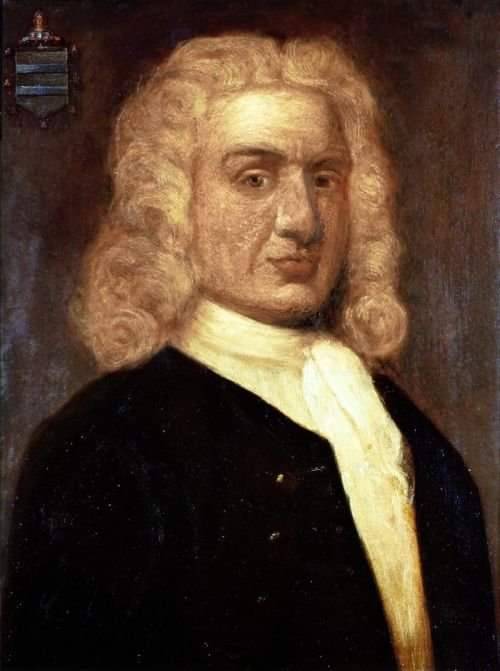
On 22nd January 1645 William Kidd, Scottish sailor and pirate hunter was born in Dundee, although other sources have the year as 1654 and 1655.
The son of John Kidd a seaman, and his wife Bessie Butchart, William became a sea captain, his first ship being the Antigua. .By 1689 he was in command of a vessel named the Blessed William which was operating as a privateer in the West Indies (A privateer ship is a warship that is privately owned, but has government permission to attack enemy ships. The privateer must split any spoils with the government). He was successful, but in 1691 his crew mutinied and left him stranded on the island of Antigua. Kidd went to New York where he married well and became a merchant.
Kidd might have spent the rest of his life on Wall Street, but apparently the sea was still in his blood. In 1695 he travelled to London to ask to be put in command of a privateer again. He got the Adventure Galley, a 237-ton vessel with 34 cannons. His primary backer on this venture was Richard Coote, the Earl of Bellamont, but other nobles (including the King) also had a stake in the voyage.
Kidd sailed out of the Chatham dockyard and immediately was boarded by the Royal Navy, who press-ganged many of his best sailors for their own ships. Kidd was forced to replace them with disreputable sailors with pirate leanings. In New York he added more crew, then set off for the Indian Ocean. His public mission was to clear the sea there of pirates, but it was probably understood by his backers that he would also take every opportunity to capture any enemy ships that had valuable cargo.
Months went by and no acceptable victims were found. The crew pressured Kidd to turn pirate and attack anything. Kidd got into a fight and killed a gunner after refusing to plunder an English ship they’d sighted.
Finally, in February 1698, a Indian-owned ship, The Quedah Merchant, was spotted and Kidd captured her easily. She carried a cargo worth some 710,000 pounds. Best of all she had French papers which made her a legal target for Kidd under his privateer commission.
Meanwhile, back in London, politics were turning against Kidd. Exaggerated reports of his adventures were coming in from the Indian Ocean and the enemies of his backers were using them to denounce the Whig party to which many of Kidd’s powerful friends belonged. Kidd’s friends finally distanced themselves from him labelling him an “obnoxious pirate” and a price was set on his head.
Kidd got wind of this and abandoned the damaged Adventure Galley, traded the Quedah Merchant treasure for a small sloop, and ran for New York where he thought his patron Governor Bellamont could help him.
Outside New York, Kidd buried the bulk of the treasure on Gardiner’s Island (one of the few verified instances of a pirate actually burying a treasure) and attempted to use it as a bargaining chip for a pardon. It didn’t work. Kidd was arrested and imprisoned and the treasure recovered.
Despite his protests that he was only a privateer, Kidd was tried in London and executed in 1701. The papers that might have proved his innocence disappeared in Bellamont’s hands and his logbook was burned. His corpse was displayed in an iron cage on the dock at Thames Estuary for several years as a warning to other would-be pirates.
Every now and then the press carry a story that Captain Kidd’s treasure has been discovered, but to date it is still buried somewhere, waiting to be found!
Here is one of those stories…..https://www.bbc.co.uk/news/world-africa-32621444
16 notes
·
View notes
Text

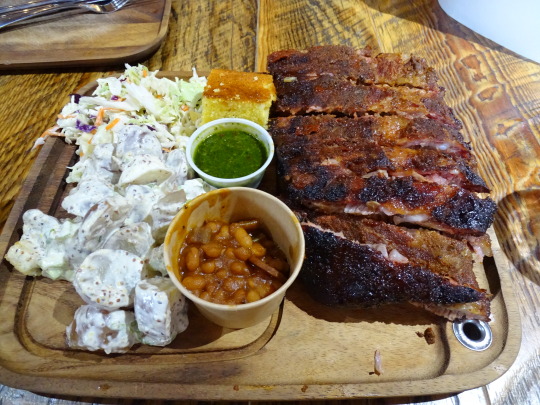






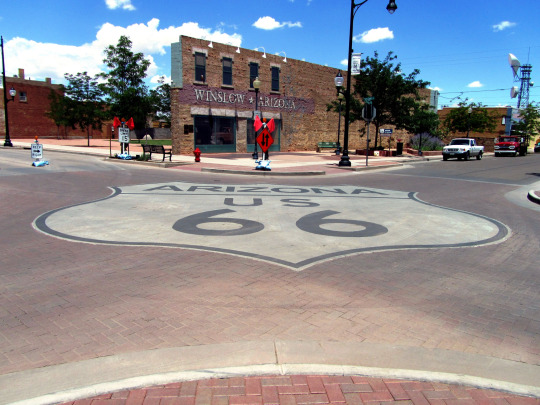






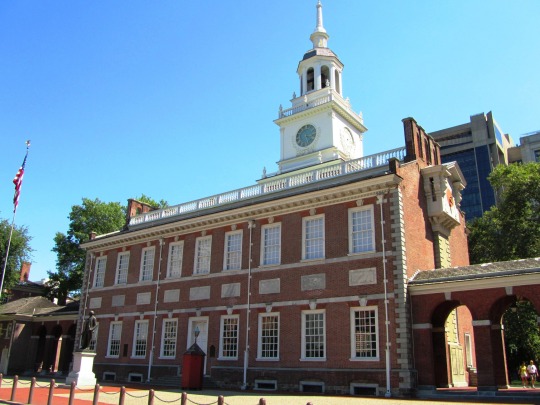
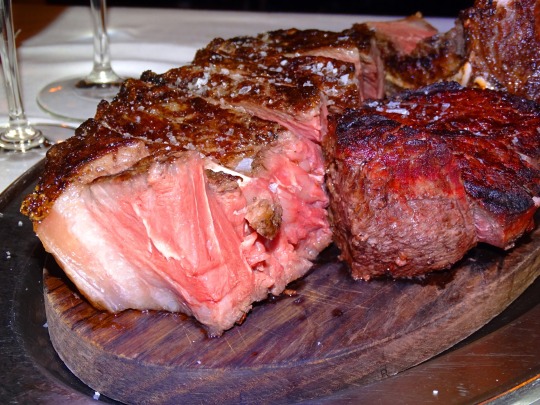
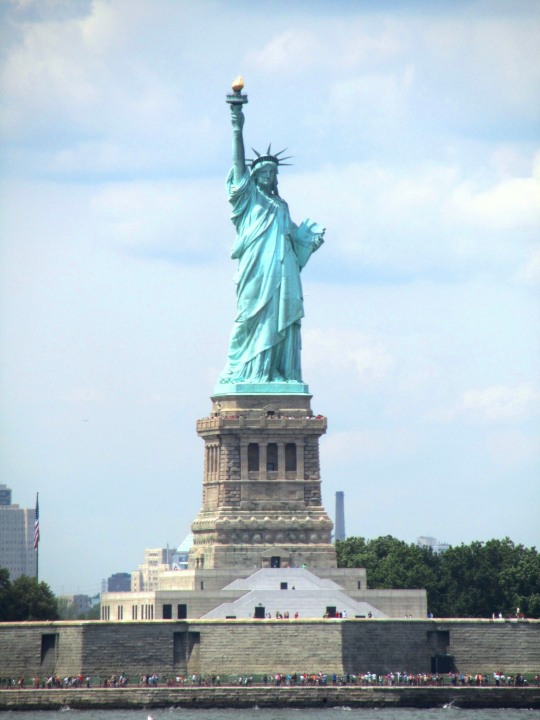
Fourth of July/Independence Day
Americans come together on July 4 to celebrate the nation’s birthday and Independence Day. On this day, most Americans enjoy grills in their backyards, at beaches, or in parks. Some partake in parades or marches and enjoy the fireworks that are often launched at dusk. We kick off the festivities with details, trivia, and anything else you need to know about Independence Day. Happy Fourth!
When is Fourth of July 2024?
The American glory of Red, White, and Blue, is celebrated on Independence Day on July 4.
History of Fourth of July
Although most of us already had this history lesson in school, we probably weren’t really paying attention as the clock ticked closer to recess or the end of the day. But we can’t fully appreciate our freedoms if we don’t know how we got them — and, more importantly, how close we came to losing them. The story of America’s independence is truly fascinating with more historical twists and turns than we can possibly get into here. But at least we can get you started with the basics.
In the 1700s, America wasn’t really a nation of ‘united states.’ Instead, there were 13 colonies with distinct personalities. From 1763 to 1773, Britain’s King George III increasingly placed pressure on the colonies as he and the British Parliament enacted a succession of draconian taxes and laws on them. Excessive taxes on British luxury goods like tea and sugar were designed to benefit the British crown without any regard for the hardships of the colonists. By 1764, the phrase “Taxation without representation is tyranny” spread throughout the colonies as the rallying cry of outrage.
The more the colonists rebelled, the more King George doubled down with force. Imagine if enemy soldiers not only had the right to enter your home but the soldiers could demand that you feed and house them. The Quartering Act of 1765 allowed British soldiers to do just that.
But the Stamp Act of 1765 became the straw that broke the colonists’ backs. Passed by Parliament in March, this act taxed any piece of printed paper, including newspapers, legal documents, ships’ papers — and even playing cards! As the colonial grumbling got louder and bolder, in the fall of 1768, British ships arrived in Boston Harbor as a show of force. Remember, the British Navy dominated the seas all over the world due to the far-reaching presence of the British Empire.
Tensions boiled over on March 5, 1770, in Boston Harbor during a street fight between a group of colonists and British soldiers. The soldiers fired shots that killed 47-year-old Crispus Attucks, the first American and Black man to die along with three other colonists in the Boston Massacre.
In 1773, the Boston Tea Party (from which today’s Tea Party Republicans get their name) erupted when colonists disguised as Mohican Indians raided a British ship, dumping all the tea overboard to avoid paying the taxes. Continued pressure led to resistance and the start of the Revolutionary War in the towns of Lexington and Concord when a militia of patriots battled British soldiers on April 19, 1775. Conditions were ripe for American independence.
When the first battles in the Revolutionary War broke out in April 1775, only a handful of colonists wished for total independence from Great Britain, and those who did were considered extremists.
However, halfway through the following year, many more colonists had come to lean more toward independence, as a result of growing hostility towards Britain and the spread of revolutionary views like those conveyed in the bestselling pamphlet published in early 1776 by Thomas Paine — “Common Sense.”
On June 7, 1776, the Continental Congress met at the Pennsylvania State House (later Independence Hall) in Philadelphia and Richard Henry Lee, the Virginia delegate, introduced a motion calling for the independence of the colonies. Amid heated debate, Congress rescheduled the vote on Lee’s resolution but appointed a five-man committee — including Thomas Jefferson of Virginia, John Adams of Massachusetts, Roger Sherman of Connecticut, Benjamin Franklin of Pennsylvania, and Robert R. Livingston of New York — to draft a formal statement justifying the defect from Great Britain.
On July 2, 1776, in a virtually unanimous vote, the Continental Congress voted in favor of Lee’s resolution for independence, and on July 4th, it formally adopted the Declaration of Independence, which had been written largely by Jefferson. Ultimately, the drafting of the Declaration of Independence was a contentious process. After much debate over what to include and what to leave out, Thomas Jefferson, tasked with pulling the document together, envisioned a nation where “Life, Liberty and the pursuit of happiness” crystallized the very meaning of being an American. The document proclaimed the 13 American colonies’ liberation from Britain and reaffirmed their rights as free men — declaring that they were no longer subject (and subordinate) to the monarch of Britain, King George III, and were now united, free, and independent states.
John Adams wrote to his wife Abigail that July 2 “will be celebrated, by succeeding Generations, as the great anniversary Festival” and that the celebration should include “Pomp and Parade…Games, Sports, Guns, Bells, Bonfires and Illuminations from one End of this Continent to the other.”
By an extraordinary coincidence, Thomas Jefferson and John Adams, the only two signatories of the Declaration of Independence later to serve as presidents of the United States, both died on the same day: July 4, 1826, which was the 50th anniversary of the Declaration. Although not a signatory of the Declaration of Independence, James Monroe, another Founding Father who was elected as president, also died on July 4, 1831, making him the third President who died on the anniversary of independence. The only U.S. president to have been born on Independence Day was Calvin Coolidge, who was born on July 4, 1872.
Fourth of July timeline
1763–1773
A Taxing Time
Britain’s King George III subjects colonial America to harsh taxes and laws, which benefits the Crown, not the colonists.
1765
Stamp Act
British Parliament's so-called Stamp Act taxes the colonists on any piece of printed paper including newspapers, legal documents, ships’ papers, and even playing cards.
1770
Shots Heard
British soldiers fire shots that kill 47-year-old Crispus Attucks, the first American and black man to die along with three other colonists in the Boston Massacre.
1773
Boston Tea Party
Disguised colonists take over a British ship and dump all the British tea overboard to avoid paying the taxes for it.
July 4, 1776
Declaration of Independence
After spending two days on revisions, the Continental Congress approves the historical document's final wording.
1941
Declaration of a Holiday
Independence Day becomes a federal holiday.
1950
Establishing Independence Day Traditions
Barbecues, parades, flag-raising ceremonies, and fireworks become the norm on Independence Day.
1976
Bicentennial
Americans celebrate the country's 200th birthday — the U.S. Mint issues a special Bicentennial quarter — with new designs featuring all 50 states.
INDEPENDENCE DAY TRADITIONS
American Independence Day parades go way back. By the summer of 1776, Americans celebrated the ‘death’ of British rule with mock funerals, revelry, and feasting. Americans still love to celebrate — and if you’re seeking a truly authentic experience, travel to Bristol, Rhode Island, home of America’s oldest Independence Day parade since 1785. Watch fife and drum corps marching bands, cartoon characters, and celebrities in vintage cars.
On Independence Day, we haul out family recipes for chili, barbecue ribs, chicken, and even tofu. We savor Louisiana gumbo and Maine lobster boils. There are zesty potato salads and delicious sweet corn roasted on the cob. Pies and cakes are laid out. Independence Day lets you get your patriotic grub on.
They chirp, whiz, and bang. Fireworks originated with the ancient Chinese, spread to Europe, and later added colorful displays to early American Independence Day events. Both Boston and Philadelphia launched fireworks on July 4, 1777. John Adams told his wife, Abigail, that Independence Day “ought to be solemnized with pomp and parade, bonfires and illumination.” This year, enjoy your Independence Day finale with a phantasmagorical fireworks display!
INDEPENDENCE DAY BY THE NUMBERS
2.5 million – the estimated number of people living in the newly independent nation in 1776.
327 million – the estimated population of the country in 2018.
56 – the number of signers of the Declaration of Independence.
1st – signer was John Hancock.
70 – the age of the oldest of the signers, Benjamin Franklin.
$4.0 million – the dollar value of U.S. imports of American flags in 2013.
$781,222 – the dollar value of U.S. flags exported in 2013.
$302.7 million – the annual dollar value of shipments of fabricated flags, banners, and similar emblems by the country’s manufacturers.
1 in 4 – the number of people who will set off their own fireworks.
150 million – the number of wieners consumed on the holiday nationwide.
Fourth of July FAQs
What does the 4th of July mean?
The 4th of July is America’s Independence Day, and the annual celebration of the nation.
How old is America today?
As of 2021, the United States of America is 245 years old.
What is the most famous text in the Declaration of Independence?
The best-known part of the Declaration of Independence is “We hold these Truths to be self-evident, that all Men are created equal, that they are endowed by their Creator with certain unalienable Rights, that among these are Life, Liberty and the Pursuit of Happiness … “
What fun ways can I celebrate Independence Day?
Parades and grills are commonplace on Independence Day but if you’re looking to go the extra mile when we suggest you take a look at our list of Fourth of July nail ideas to get you in the mood for celebrating.
Fourth of July Activities
Read the Declaration of Independence: Most Americans have never actually read the Declaration of Independence. But if it weren't for this short but historically significant document, they may not have been able to spend the day grilling or lighting fireworks, and definitely wouldn't have had the day off.
Watch fireworks: It's a blast — in more ways than one. Gazing at fireworks on the Fourth is a tradition that goes back centuries. In fact, John Adams alluded to this type of celebration in a letter he wrote to his wife Abigail on July 3, 1776.
Visit a national landmark or historical site: America is full of fascinating historical landmarks and sites. No matter where in the country you live, there is almost certainly a site of historical importance nearby. Some ideas could include a Native American reservation, a Civil War battleground, a government building, or a war memorial.
5 Fascinating Facts About The Declaration Of Independence
John Adams refused July 4: Because the actual vote for independence took place on July 2, 1776, John Adams refused to recognize celebrations for July 4.
Technically… The Declaration of Independence was finalized on July 4, but most of the signers actually signed the document on August 2, 1776.
Edits and revisions: There were a total of 86 edits made to the original draft written by Thomas Jefferson.
Independence wasn’t the only reason: The Declaration of Independence was penned down formally so that colonies seeking foreign allies could legally declare themselves free from the British.
It’s not a map, but… There isn’t a treasure map as shown in the movie “National Treasure,” but there is actually something written on the back of the Declaration of Independence — “Original Declaration of Independence dates 4th July 1776.”
Why We Love Fourth of July
It's the most delicious day of the summer: There are few days of the year that offer as much food variety as the Fourth of July. Steak? Check. Chicken wings? Yep. Fresh strawberry pie? Absolutely. Macaroni and cheese? You got it. No matter what you're craving, it's sure to be available on Independence Day.
We're all in this together: Admit it, the Fourth of July makes you feel giddy. Maybe it's the parades, the BBQs, or, most likely, the fireworks. This is the one night of the year you can watch the sky light up, while surrounded by children laughing, dogs barking, and patriotic music playing.
You can wear whatever you want — as long as it's red, white, and blue: That bandana you never get to wear? That decades-old T-shirt with an American flag on it? Those are all fair game on Independence Day — as long as they're red, white, and blue.
Source
#Independence Day#IndependenceDay#FourthOfJuly#travel#original photography#vacation#tourist attraction#landmark#cityscape#architecture#landscape#New York City#Grand Canyon National Park#Washington DC#Mount Rushmore National Memorial#Chicago Hot Dog#Original 5 Napkin Burger#Porterhouse for 3#steak#Yosemite National Park#Arches National Park#US flag#Monument Valley#4 July 1776#anniversary#US history#Alaska Highway
4 notes
·
View notes
Text
Thanks so much @erixadraws , @ladylamrian , @stars-are-within-me , @peonierose for the tags! It's been fun getting to know you more 😊
Last song:
Favorite colour: navy blue and teal
Currently watching: I'm catching up on Succession on HBO, there's something about this gritty, absolutely disfunctional family drama I can't get enough of!
Currently reading: The wheel of time (WOT) series on Prime motivated me to re-read Robert Jordan's original work. It's such an amazing high fantasy series, and honestly the TV show - while entertaining - does not do the books justice.. i'm on book 4 rn. Also, just loving discovering all your wonderful fiction. There are some gems around this fandom ❤️
Sweet/spicy/savoury: i'm definitely a spicy & savoury person. I Love thai/indian food, especially currys!!
Last thing I googled: quite a few things of late! I google a lot of words for fics - French is my first language (I'm French-Canadian) so I often have to look up which words and expressions better reflect my thinking...
Current obsession: I've spent an inordinate amount of time on Blades of Light and Shadow lately, re-reading the books, catching up on amazing fanfics and fanart. Mal and Autumn live in my head and I have quite a few ideas I want to put in writing, including adventuring with the gang, exploring more of the united realm in my HC. But for now they deserve to rest and just be happy 🥺❤️
Currently working on:
- lots of BOLAS Mal x (f!mc) Autumn Nightbloom ideas floating around in my mind. I want to write more fluf/happy fics bc they deserve a break!! But also some angst, working out BOLAS2 traumas and the reality that Autumn as an elf may live much longer than her lover.. I need to sit down and work on outlines 🙈
- I first heard Labrinth's "Still don't know my name" reading Kindred and it's given me an idea for a Kaine fic helping my (f!mc) Ivy retrieve the Lodestone before Mara gets her hands on it... but in my heads its NSFW smut heavy (Kaine is the lord of desire...), still pondering writing/sharing it..
- also playing around with some Wake the Dead Eva (f!mc) x Troy Hassan fic ideas
Tagging @artbyalz ; @lovehugsandcandy @mozartholvdehwk ; and whoever wants to join! 😊
#tag game#playchoices#blades of light and shadow#choices kindred#blades of light and shadow 2#wake the dead choices#Spotify
8 notes
·
View notes
Text
Top Defence Academy in India#trending #viral #bigboss
Why Manasa Defence Academy is the top defence academy in India? Discover the secrets behind their unmatched training programs that have consistently produced top-tier defence professionals. At Manasa Defence Academy, students receive the best defence training in the country, combining rigorous physical conditioning, strategic academic learning, and expert mentorship. This video delves into the key factors that set Manasa Defence Academy apart from other institutes, including its state-of-the-art facilities, experienced trainers, and a track record of success in national defence exams. Join us as we explore why Manasa Defence Academy continues to lead the way in defence education in India, shaping the future of the nation's armed forces.
Call: 7799799221 Website: www.manasadefenceacademy.com
#TopDefenceAcademy#ManasaDefenceAcademy#DefenceTraining#BestAcademyIndia#DefenceEducation#MilitaryTraining#IndianDefence#SSBCoaching#DefenceCareers#ArmyNavyAirforce#bestdefenceacademy #topdefenceacademy
#Top Defence Academy in India#Manasa Defence Academy#best defence training#Indian military training#defence education India#SSB coaching#NDA training#defence career guidance#army training academy#navy training academy#air force training academy#elite defence academy#best defence institute#defence exam preparation#defence jobs India#Indian defence forces#military academy India#defence academy success#top defence coaching#best SSB coaching#defence academy review#army navy air force#defence job preparation#defence career coaching#defence entrance exams#Indian armed forces#defence training facilities#Manasa Defence Academy review#top defence institutes#defence aspirants India
0 notes
Text
YES Germany: Empowering Students to Achieve Their Study Abroad Dreams
As the global demand for international education continues to rise, the study abroad consultancy market in India has witnessed remarkable growth in recent years. Amidst this dynamic landscape, YES Germany has emerged as a leading player, offering comprehensive services to help students realize their dreams of studying in Germany.
YES Germany: A Trusted Name in Study Abroad Consulting
Established over a decade ago, YES Germany has carved out a niche for itself as a premier study abroad consultant in India. With a team of highly qualified and experienced professionals, the company has built a strong reputation for guiding students through every step of the study abroad journey, from university selection to visa assistance and beyond.
Market Size and Growth
The Indian study abroad market is expected to reach a staggering $80 billion by 2024, growing at a CAGR of 18% according to a report by the Federation of Indian Chambers of Commerce and Industry (FICCI). Within this rapidly expanding market, YES Germany has firmly established its presence, catering to the growing demand for study abroad services in Faridabad and beyond.
Industry Leadership and Innovation
What sets YES Germany apart is its unwavering commitment to innovation and excellence. The company's comprehensive suite of services, including counseling, confirmed admissions, visa assistance, language training, and post-arrival support, has earned it a reputation as a one-stop-shop for study abroad aspirants.

YES Germany's industry leadership is further bolstered by its strong partnerships with prestigious German universities and its deep understanding of the German education system. The company's founder, Dr. Gagan Syal, is a German-educated engineer with over a decade of experience at Mercedes-Benz, lending the organization a unique blend of academic and industry expertise.
Overcoming Industry Challenges
The study abroad industry has faced its fair share of challenges, particularly in the wake of the COVID-19 pandemic. However, YES Germany has demonstrated its resilience by adapting its services to the changing landscape, offering virtual counseling sessions and online language classes to ensure seamless support for its clients.
Moreover, the company has leveraged its strong industry connections and market insights to navigate the evolving regulatory environment and stay ahead of the curve. This agility and responsiveness have been instrumental in maintaining YES Germany's position as a trusted partner for students seeking to study in Germany.
Market Outlook and Future Prospects
As the global economy recovers and international travel resumes, the demand for study abroad services is expected to surge. YES Germany is well-positioned to capitalize on this growth, with its comprehensive offerings, industry expertise, and commitment to student success.
The company's focus on providing personalized guidance, tailored to the unique needs of each student, has been a key driver of its success. By continuously investing in its team, technology, and industry partnerships, YES Germany is poised to maintain its leadership position in the study abroad consultancy market.
Furthermore, Yes Germany has a widespread presence with branches in - Faridabad, Gurgaon, Chandigarh, Noida, Delhi, Dubai, Bangalore-Indiranagar, Bangalore-BTM, Hyderabad, Chennai, Pune, Mumbai-Navi Mumbai, and Mumbai-Andheri. This extensive network ensures that their services are easily accessible to students across India, providing localized support and personalized guidance.

Conclusion
In a rapidly evolving study abroad landscape, YES Germany has emerged as a beacon of excellence, empowering students to achieve their academic and professional aspirations in Germany. With its unwavering commitment to innovation, industry expertise, and student-centric approach, the company is well-equipped to navigate the challenges and seize the opportunities that lie ahead, cementing its status as the premier study abroad consultant in India.
#Yes Germany#Study Abroad Consultant#Overseas education consultant#education consultancy services#abroad education consultants#foreign education consultants#best consultancy for abroad studies#best agency for studying abroad#top consultants for study abroad#best consultancy for mba abroad#educational consultants for study abroad#study abroad consultancy services
3 notes
·
View notes
Text
Events 6.16 (before 1910)
632 – Yazdegerd III ascends the throne as king (shah) of the Persian Empire. He becomes the last ruler of the Sasanian dynasty (modern Iran). 1407 – Ming–Hồ War: Retired King Hồ Quý Ly and his son King Hồ Hán Thương of Hồ dynasty are captured by the Ming armies. 1487 – Battle of Stoke Field: King Henry VII of England defeats the leaders of a Yorkist rebellion in the final engagement of the Wars of the Roses. 1632 – The Plymouth Company granted a land patent to Thomas Purchase, the first settler of Pejepscot, Maine, settling at the site of Fort Andross. 1745 – War of the Austrian Succession: New England colonial troops under the command of William Pepperrell capture the Fortress of Louisbourg in Louisbourg, New France (Old Style date). 1746 – War of the Austrian Succession: Austria and Sardinia defeat a Franco-Spanish army at the Battle of Piacenza. 1755 – French and Indian War: The French surrender Fort Beauséjour to the British, leading to the expulsion of the Acadians. 1760 – French and Indian War: Robert Rogers and his Rangers surprise French held Fort Sainte Thérèse on the Richelieu River near Lake Champlain. The fort is raided and burned. 1779 – American Revolutionary War: Spain declares war on the Kingdom of Great Britain, and the Great Siege of Gibraltar begins. 1795 – French Revolutionary Wars: In what became known as Cornwallis's Retreat, a British Royal Navy squadron led by Vice Admiral William Cornwallis strongly resists a much larger French Navy force and withdraws largely intact, setting up the French Navy defeat at the Battle of Groix six days later. 1811 – Survivors of an attack the previous day by Tla-o-qui-aht on board the Pacific Fur Company's ship Tonquin, intentionally detonate a powder magazine on the ship, destroying it and killing about 100 attackers. 1815 – Battle of Ligny and Battle of Quatre Bras, two days before the Battle of Waterloo. 1819 – A major earthquake strikes the Kutch district of western India, killing over 1,543 people and raising a 6-metre-high (20 ft), 6-kilometre-wide (3.7 mi), ridge, extending for at least 80 kilometres (50 mi), that was known as the Allah Bund ("Dam of God"). 1824 – A meeting at Old Slaughter's coffee house in London leads to the formation of what is now the Royal Society for the Prevention of Cruelty to Animals (RSPCA). 1836 – The formation of the London Working Men's Association gives rise to the Chartist Movement. 1846 – The Papal conclave of 1846 elects Pope Pius IX, beginning the longest reign in the history of the papacy. 1858 – Abraham Lincoln delivers his House Divided speech in Springfield, Illinois. 1871 – The Universities Tests Act 1871 allows students to enter the universities of Oxford, Cambridge and Durham without religious tests (except for those intending to study theology). 1883 – The Victoria Hall theatre panic in Sunderland, England, kills 183 children. 1884 – The first purpose-built roller coaster, LaMarcus Adna Thompson's "Switchback Railway", opens in New York's Coney Island amusement park. 1897 – A treaty annexing the Republic of Hawaii to the United States is signed; the Republic would not be dissolved until a year later. 1903 – The Ford Motor Company is incorporated. 1903 – Roald Amundsen leaves Oslo, Norway, to commence the first east–west navigation of the Northwest Passage. 1904 – Eugen Schauman assassinates Nikolay Bobrikov, Governor-General of Finland. 1904 – Irish author James Joyce begins a relationship with Nora Barnacle and subsequently uses the date to set the actions for his novel Ulysses; this date is now traditionally called "Bloomsday".
1 note
·
View note
Text
'So that means that six months like the one you have just had would send a third-class firm to its deathbed,' Monte Cristo said imperturbably.
'Huh!' Danglars said, with a very pale smile. 'That's a nice way of putting it.'
'Say seven months,' Monte Cristo continued, in the same tone. 'Tell me, have you ever considered that seven times one million seven hundred thousand francs makes about twelve million? No? Well, you are right, because if one were to reflect on such things, one would never venture one's capital, which is to the financier what his skin is to a civilized man. We have our more or less sumptuous clothes, which are our credit, but when a man dies he has only his skin. Just as, when you leave business, you will have your real wealth -- five or six million at most ... because a third-class fortune barely represents a third or a quarter of what it appears, much as the locomotive of a railway train, amid the steam and smoke that enwraps it and enlarges it, is only at base a more or less powerful machine. Well, of the five million that represent your real capital, you have just lost around two million, which reduces your notional fortune or your credit by the same amount. All this means, my dear Monsieur Danglars, that your skin has just been opened by a wound which, repeated four times, would mean death. Well, well! You must be careful, my dear Monsieur Danglars. Do you need money? Can I lend you some?'
'Your sums are quite wrong!' Danglars exclaimed, summoning up all the philosophy and dissimulation he could muster. 'The way things stand, money has been coming into my account from successful speculation. The blood that flowed out of the wound has been replaced by nourishment. I may have lost a battle in Spain, and I was defeated at Trieste, but my Indian navy should have captured some galleons and my Mexican prospector have found a mine.'
'Excellent, excellent; but the scar remains. At the first loss it will re-open.'
'No, because my business is founded on certainties,' said Danglars with the glibness of a charlatan whose profession is to extol his own credit. 'For me to be overthrown, three governments would have to fall.'
'Well, it has happened.'
'And for the harvest to fail.'
'Remember the seven fat cows and the seven lean cows.'
'Or for the sea to part, as at the time of the Pharaohs; and even then, there are several seas, and the ships would get by through turning into caravans.'
'So much the better, a thousand times, my dear Monsieur Danglars,' said Monte Cristo. 'I see I was wrong and that your comes into the category of a second-class fortune.'
- The Count of Monte Cristo, Alexandre Dumas
7 notes
·
View notes
Text
Remembering Indigenous Rights Advocate James Abourezk

A few days ago, we lost a tireless champion of the rights of the Indigenous Peoples of North America. Retired South Dakota United States Senator James Abourezk, the architect of the Indian Child Welfare Act (ICWA), passed away at his home in Sioux Falls on Friday, Feb. 24 on his 92nd birthday. James George Abourezk was born in 1931 in Wood, South Dakota, the son of Lebanese immigrants. Growing up on the Rosebud Indian Reservation, he spoke only Arabic at home and did not learn English until he went to elementary school.
After high school graduation in 1948, Abourezk served in the US Navy during the Korean War. Following military service, he earned a degree in civil engineering from the South Dakota School of Mines in Rapid City in 1961, and worked as a civil engineer in California, before returning to South Dakota to work on the Minutemen missile silos. At the age of 32, he decided to pursue law, and earned a J.D. degree from University of South Dakota School of Law in Vermillion in 1966.
Abourezk began a legal practice in Rapid City, South Dakota, and joined the Democratic Party. He ran in 1968 for Attorney General of South Dakota but was defeated by Gordon Mydland. In 1972, Abourezk was elected to the U.S. Senate, where he served from 1973 to 1979, after which he chose not to seek a second term. He was the first chair of the Senate Committee on Indian Affairs. His legislative successes in the Senate included the 1975 Indian Self-Determination and Education Assistance Act, as well as the American Indian Religious Freedom Act of 1978. The American Indian Religious Freedom Act gives federal protection to the traditional religions of the American Indian, Eskimo, Aleut, and Native Hawaiians.
Abourezk's signature legislation was the Indian Child Welfare Act (ICWA, 1978), designed to protect Native American children and families from being torn apart. Native American children have been removed by state social agencies from their families and placed in foster care or adoption at a disproportionately high rate, and usually placed with non Native American families. This both deprived the children of their culture and threatened the very survival of the tribes. This legislation was intended to provide a federal standard that emphasized the needs of Native American children to be raised in their own cultures, and gave precedence to tribal courts for decisions about children domiciled on the reservation, as well as concurrent but presumptive jurisdiction with state courts for Native American children off the reservation.
In 1973, Senators Abourezk and George McGovern attempted to end the occupation of Wounded Knee by negotiating with American Indian Movement (AIM) leaders, who were in a standoff with federal law enforcement after demanding that the federal government honor its historical treaties with the Oglala Sioux nation. The Wounded Knee Occupation began on February 27, 1973 when about 200 Oglala Lakota and followers of AIM seized and occupied the town of Wounded Knee, South Dakota. The occupation lasted for a total of 71 days, during which time two Lakota men were shot to death by federal agents and several more were wounded. It was a key moment in the struggle for Native American rights.
The summer after the occupation of Wounded Knee, Abourezk introduced the American Indian Policy Review Commission Act, which created the eleven-member commission to study legislation with the goal of addressing key issues in Indian Country. He served as its chairman until its landmark report was published in 1977. He took the gavel as chairman of the Select Committee on Indian Affairs from its creation in 1977 to 1979, when he left the Senate.
In 1980, Abourezk founded the American-Arab Anti-Discrimination Committee, a grassroots civil rights organization. In 1989, he published his Advise and Dissent: Memoirs of South Dakota and the U.S. Senate. He was the co-author, along with Hyman Bookbinder, of Through Different Eyes: Two Leading Americans -- a Jew and an Arab -- Debate U. S. Policy in the Middle East (1987).
After his retirement from the Senate, Abourezk worked as a lawyer and writer in Sioux Falls, South Dakota. He continued to be active in supporting tribal sovereignty and culture. Since 2005, he chaired the Lakota People's Law Project Advisory Committee. The Lakota People's Law Project is committed to defending the rights of South Dakota's Native American families, exposing the epidemic of illegal seizures of Lakota children by the state of South Dakota, working towards the structural solution to end this injustice. Just last year, Sen. Abourezk assisted their legal team in filing an amicus brief supporting ICWA with the United States Supreme Court. Later this year, the High Court could overturn the senator's landmark piece of federal legislation -- and that poses an imminent threat to Native families and sovereignty.
#senator james abourezk#save icwa#indigenous cultures#indigenous rights#indigenous sovereignty#tribal sovereignty#indian child welfare act
5 notes
·
View notes
Text

Explained: Lockheed Martin delivers pod-sized laser energy weapon to USAF; what is it?
Lockheed Martin has delivered a LANCE system to the Air Force Research Laboratory of the US Air Force for operational testing. What is this energy weapon, and why is this development significant?
Concept image of a LANCE pod mounted on an F-16 fighter aircraft. (Image courtesy: Lockheed Martin)
What is this energy weapon, known as Laser Advancements of Next-Generation Compact Environments (LANCE), and what are its features? Why is this development significant? What impact will it have on future battlefields? The Indian Express explains.
According to a Lockheed Martin executive quoted by the US website, the LANCE system is one-sixth the size of the other laser energy systems being developed by the company.
Why is this development significant?
The development is significant as it is an acknowledgement that efforts to reduce the size of the laser energy weapon have been successful, and it is now ready to be tested after being mounted on an aircraft.
The fact that the size of the energy weapon has been reduced to that of a pod which can be mounted on a fighter aircraft, or any aircraft for that matter, is an important development.
This laser weapon will give the USAF the capability of shooting down incoming anti-aircraft missiles, thus giving it a crucial edge over its adversaries.
Breaking Defense quoted a Lockheed Martin executive as saying that LANCE is the “smallest, lightest high energy laser of its power class that Lockheed Martin has built to date”. The executive was further quoted as saying it is a critical benchmark in developing an operational laser weapon system in the airborne domain.
While the energy weapon has been developed by Lockheed Martin, the beam control system has been developed by Northrop Grumman, and the pod which will be mounted on an aircraft has been developed by Boeing.
Also in Explained | Next-generation Corvettes, and the combat edge Navy seeks through them
What are the implications of LANCE in future battlefields?
While LANCE has been reduced in size for operational use on aircraft, the system can definitely be put to use on a variety of platforms on land and at sea.
At present, LANCE has been manufactured for a defensive role. However, this research could be furthered to develop an offensive weapon, one that could not only shoot down aircraft and drones, but also be mounted atop ground- and sea-based mobile platforms for offensive roles.
Which countries are actively pursuing development of laser energy weapons?
Apart from the US, several other countries have robust laser energy weapon development programmes. This includes China, Russia, Israel, Germany, France and India.
Israel recently tested its laser weapon to shoot down a drone from the ground.
Russia, meanwhile, said it had tested a laser weapon — Zadira — in Ukraine recently, a claim dismissed by western powers.
Don't miss | What are the precision guided rocket systems being supplied to Ukraine?
While Chinese Navy ships have been photographed with energy weapons onboard, the US Navy officially tested one such system some years back.
India, too, is developing a directed energy weapon named DURGA II, which stands for Directed Unrestricted Ray-Gun Array. It is said to be a light energy weapon of 100 kilowatt capacity.
8 notes
·
View notes